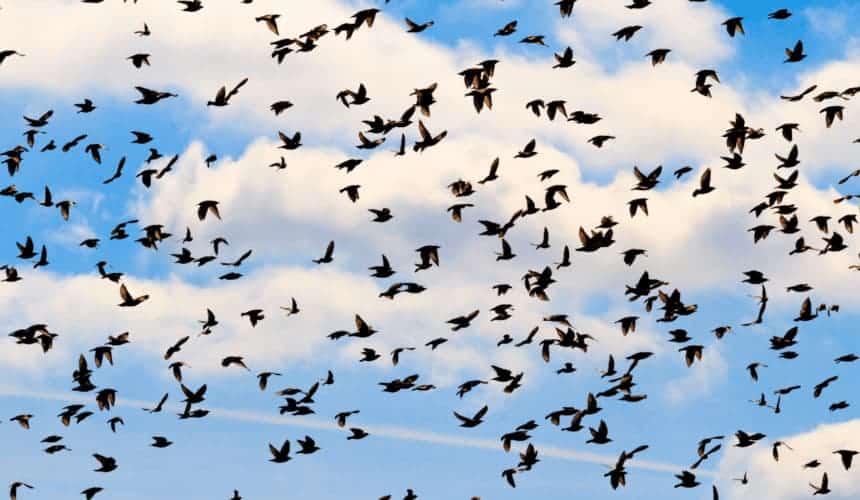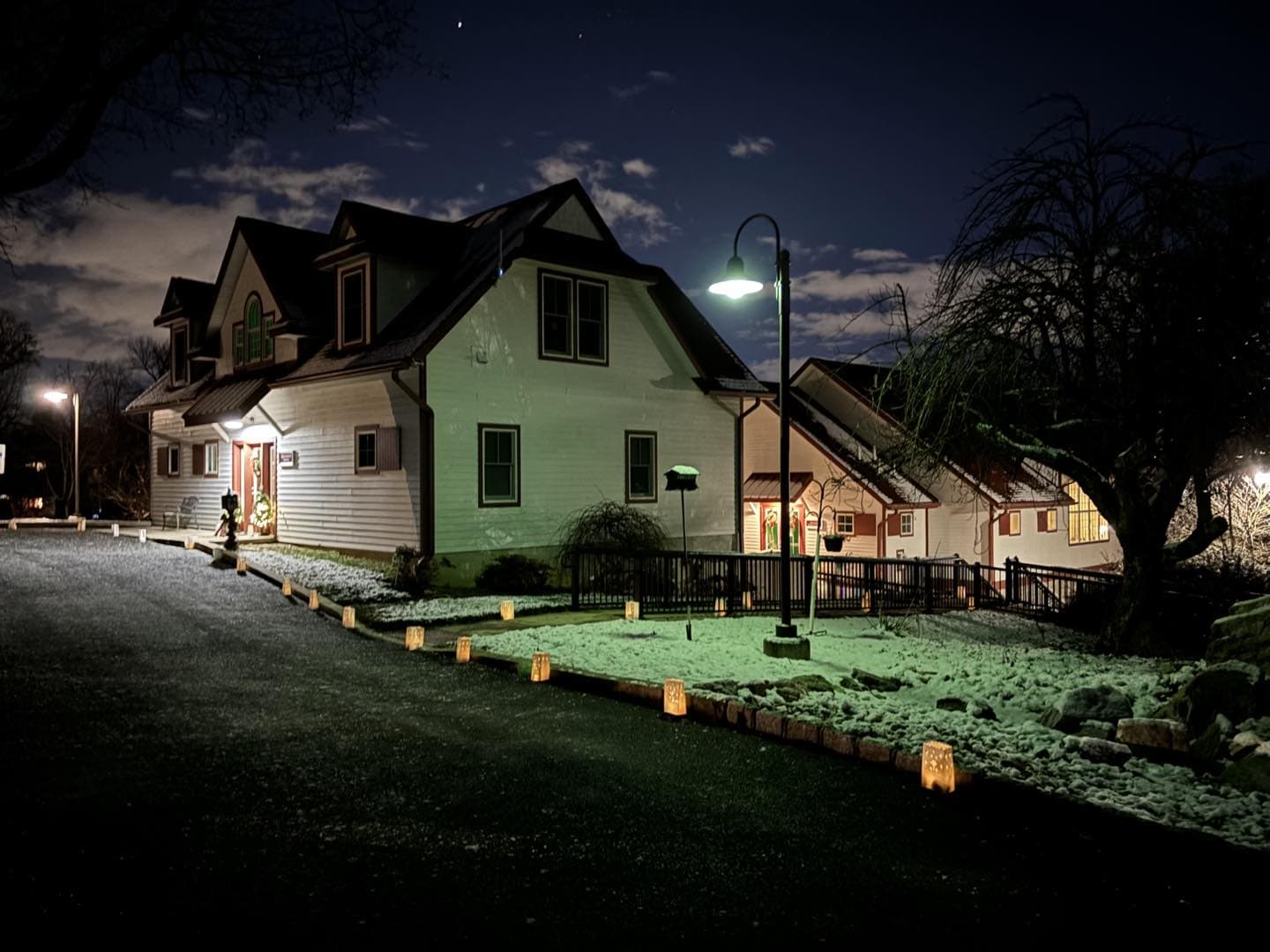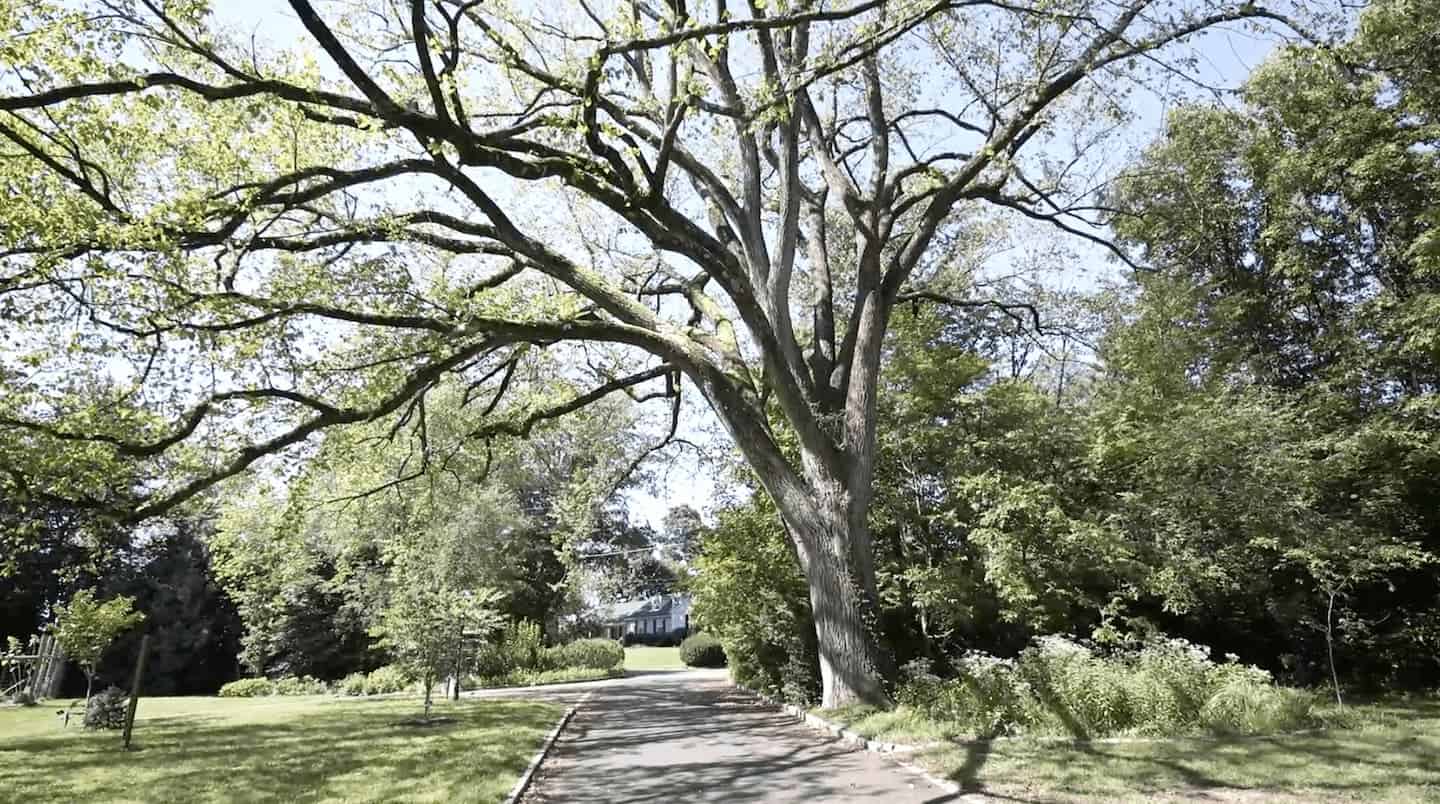Dear Friends,
Stepping out barefoot on the warm boards of our back deck, my younger daughter and I crane our necks to watch in amazement as hundreds of black birds, Common Grackles, fly through the trees in our woods, sliding between the branches, wings rustling, forming and reforming in synchronized groupings, swooping across the sky, settling briefly on the branches. We marvel at their silence and occasional soft chattering. My daughter tries to capture it happening on video. She wants others to see it–see what’s happening.
At Cranaleith, we are preparing to celebrate Mercy Day on September 24–a day set aside to celebrate the anniversary of the opening of the first House of Mercy in 1827 by the foundress of the Sisters of Mercy, Catherine McAuley and her two companions, Anna Maria Doyle and Catherine Byrn, in Dublin, Ireland.Volunteers and friends of Cranaleith have spent the past year folding 1000 paper cranes to be strung together in the form of a kind of Tibetan prayer flag–with plans to fly them from the Peace Pole near the majestic, 350-year-old elm tree at the corner of the center’s property. Gabrielle, a rising sophomore who volunteered all this summer, counted by hand the number we have ready: 876 at last tally. We only need a few hundred more, and fourteen volunteers are meeting next Wednesday to help fold and string each individual paper crane together into long ribbons of color. At 2:00 pm on September 24, we will fly the paper crane banner, say a prayer, and imagine how peace can move in the world around us. Remember Emily Dickinson?: “Hope” is the thing with feathers -/ That perches in the soul -/And sings the tune without the words -/And never stops – at all.”
Our shared attention? It’s a hopeful power.In Dacher Keltner’s new book,Awe:the New Science of Everyday Wonder and How It Can Transform Your Life,he describes the important work of Michael Tomasello, a psychologist documenting “how synchronized social behaviors during childhood” such as when children play or work on tasks together, “enable [the] capacity for shared attention”–moments when, Keltner writes, “we combine separate perspectives into a shared perspective, what you might call shared awareness” (100).Others have noticed this phenomenon.Rachel Naomi Remen, M.D., describes how “when we listen, we offer with our attention an opportunity for wholeness. Our listening creates sanctuary for the homeless parts with the other person.That which has been denied, unloved, devalued by themselves and by others.That which is hidden” (220).
In the sanctuary of Cranaleith, let’s stand still in our shared awareness and listen to what is hidden… Do you hear that?Does it sound like hundreds of birds, thousands of individuals, dozens of volunteers, creating a kind of wholeness, where the hidden can soar–seen and heard–across a deep blue sky?
I hope you can join us September 24 at 2 pm for a silent, shared prayer of peace at the pole.Together, let’s fly.
In Mercy,
Dawn L. Hayward




